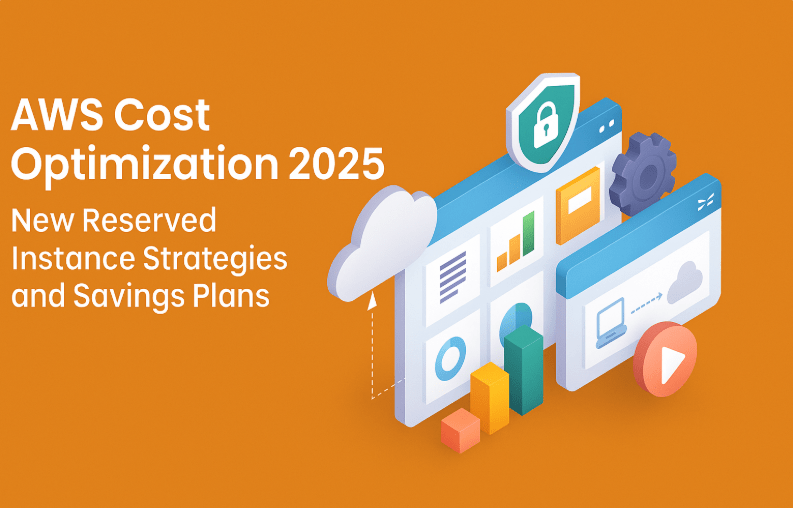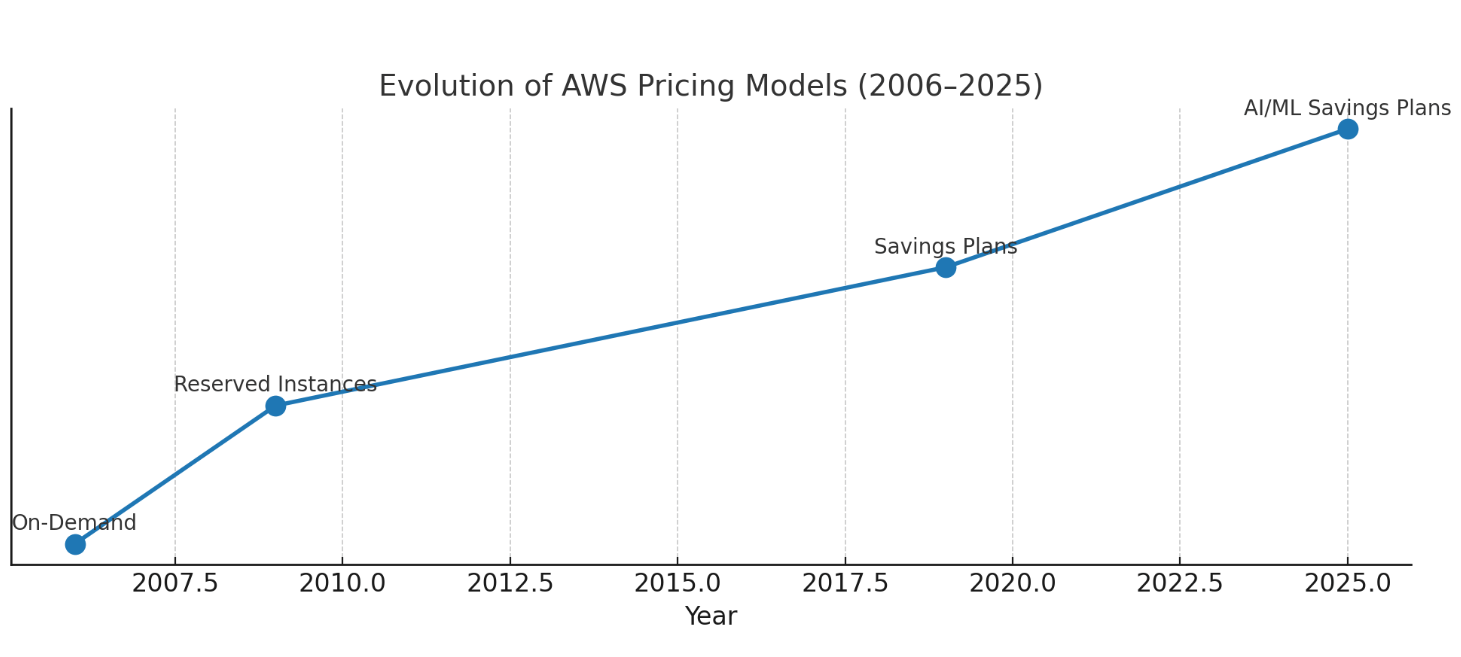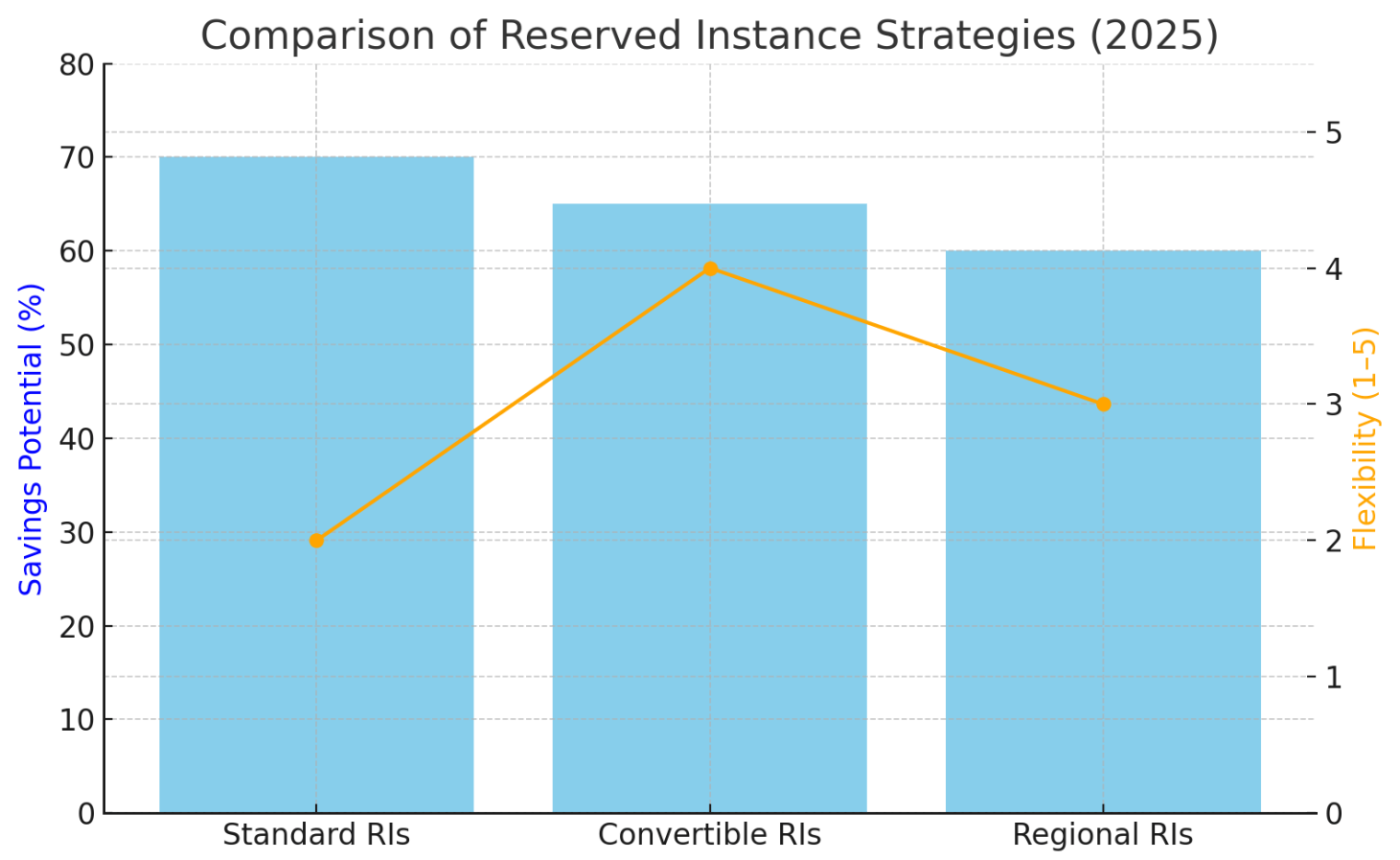
Cloud adoption is expanding across every industry, with Amazon Web Services (AWS) continuing to lead the market. As businesses scale workloads, cost optimization has become a top priority. In 2025, AWS has enhanced reserved instance strategies and savings plans to provide customers with greater flexibility, cost efficiency, and automation. Yet, without the right strategy, organizations still risk overspending on cloud resources.
This article explores how AWS pricing models have evolved, the new approaches to reserved instances and savings plans, and practical methods for maximizing cloud investment in 2025.
The evolution of AWS pricing models
On-demand instances
AWS began with an on-demand model where customers pay by the second or hour. While this is the most flexible approach, it is also the most expensive and is best suited for unpredictable workloads.
Reserved instances
Reserved instances (RIs) were introduced to offer discounts of up to 75% over on-demand in exchange for one- or three-year commitments. These quickly became the foundation of AWS cost optimization.
Savings plans
In 2019, AWS launched savings plans, which allow customers to commit to a consistent level of compute spend measured in $/hour, covering EC2, Fargate, and Lambda. These plans made pricing more flexible while still offering large discounts.
AWS pricing updates for 2025
By 2025, AWS has expanded its offerings with:
- Flexible reserved instances that can be applied across selected regions.
- Compute optimized savings plans with deeper discounts for containers and serverless applications.
- Automated utilization insights in AWS Cost Explorer, making it easier to spot underused RIs and savings plans.

Reserved instance strategies for 2025
Reserved instances are still highly relevant but require a more nuanced approach.
Diversified portfolio
Organizations reduce risk by diversifying across standard RIs, convertible RIs, and regional RIs.
- Standard RIs are suited for steady workloads.
- Convertible RIs allow instance family exchanges.
- Regional RIs provide cross-AZ flexibility to avoid waste.
Shorter commitments
Many organizations now prefer one-year commitments over three years to accommodate rapid technology changes and the growing use of AI/ML workloads.
Hybrid with spot instances
Combining RIs for baseline workloads with spot instances for burst or batch jobs provides balance between savings and agility.
Automation in RI management
Platforms such as Binadox automate tracking and optimization of RI usage, identifying underutilized resources and recommending exchanges.

AWS savings plans in 2025
Savings plans have become the go-to choice for many businesses thanks to their flexibility.
Compute savings plans
Cover EC2, Fargate, and Lambda with savings of up to 66%. Perfect for businesses migrating to containers and serverless.
EC2 instance savings plans
Offer slightly higher discounts but apply only to specific compute families in one region. Best for predictable workloads.
AI/ML optimized plans
Introduced in 2025, these target GPU-intensive workloads such as training and inference jobs on instances like P4d and Trn1.
Multi-plan approach
Most organizations mix compute, EC2 instance, and AI/ML savings plans to balance cost efficiency with flexibility.
Challenges in AWS cost optimization
Even with these tools, companies often overspend due to:
- Overcommitting to capacity they do not fully use.
- Underutilization of purchased commitments.
- Complexity in selecting the right mix of plans.
- Limited visibility into workload-to-commitment alignment.
Cloud cost management platforms like Binadox solve these challenges with dashboards, anomaly detection, rightsizing, and governance across multiple cloud vendors.
Best practices for 2025
- Rightsize continuously: Use AWS tools and third-party platforms to avoid over-provisioning before committing to RIs or savings plans.
- Monitor in real time: Dashboards and anomaly alerts prevent unexpected spending. Binadox allows custom alerts for anomalies.
- Adopt a FinOps culture: Finance, operations, and engineering teams must share responsibility for cost optimization.
- Tag resources effectively: Proper tagging allows clear cost allocation across teams, projects, and regions.
- Plan renewals carefully: Use renewal calendars to avoid lapses that revert workloads to on-demand pricing.
Example strategy in action
A SaaS provider running analytics workloads can combine:
- Standard RIs and EC2 instance savings plans for baseline compute.
- AI/ML savings plans for GPU-heavy training jobs.
- Spot instances for burst traffic.
- Binadox dashboards and rightsizing to ensure efficient governance.
This multi-layered strategy reduced annual AWS costs by nearly 40%.
The role of Binadox
Binadox strengthens AWS cost optimization by offering:
- Real-time utilization dashboards.
- Rightsizing recommendations.
- Anomaly detection and cost explorer tools.
- Automation rules for applying corrective actions.
- IaC cost tracker for managing Terraform-based deployments.
By combining AWS native tools with Binadox, organizations gain greater visibility and actionable insights to optimize spending.
Looking ahead
Trends shaping the future of AWS cost optimization include:
- AI-driven governance, where machine learning predicts workload shifts and adjusts commitments.
- Sustainability-linked pricing, rewarding greener workloads.
- Flexible commitments with rollovers or partial refunds.
- Unified multi-cloud cost harmonization with platforms like Binadox.
Conclusion
AWS cost optimization in 2025 centers on smart use of reserved instances, savings plans, and automation. While AWS has improved pricing models, real savings depend on careful planning, real-time monitoring, and the use of third-party tools.
Organizations that combine a diversified portfolio of commitments with proactive rightsizing, anomaly detection, and renewal management can reduce costs by 30–40%. The future of cloud cost management lies in balancing financial discipline with operational agility, and companies that master this balance will gain a lasting competitive edge.

